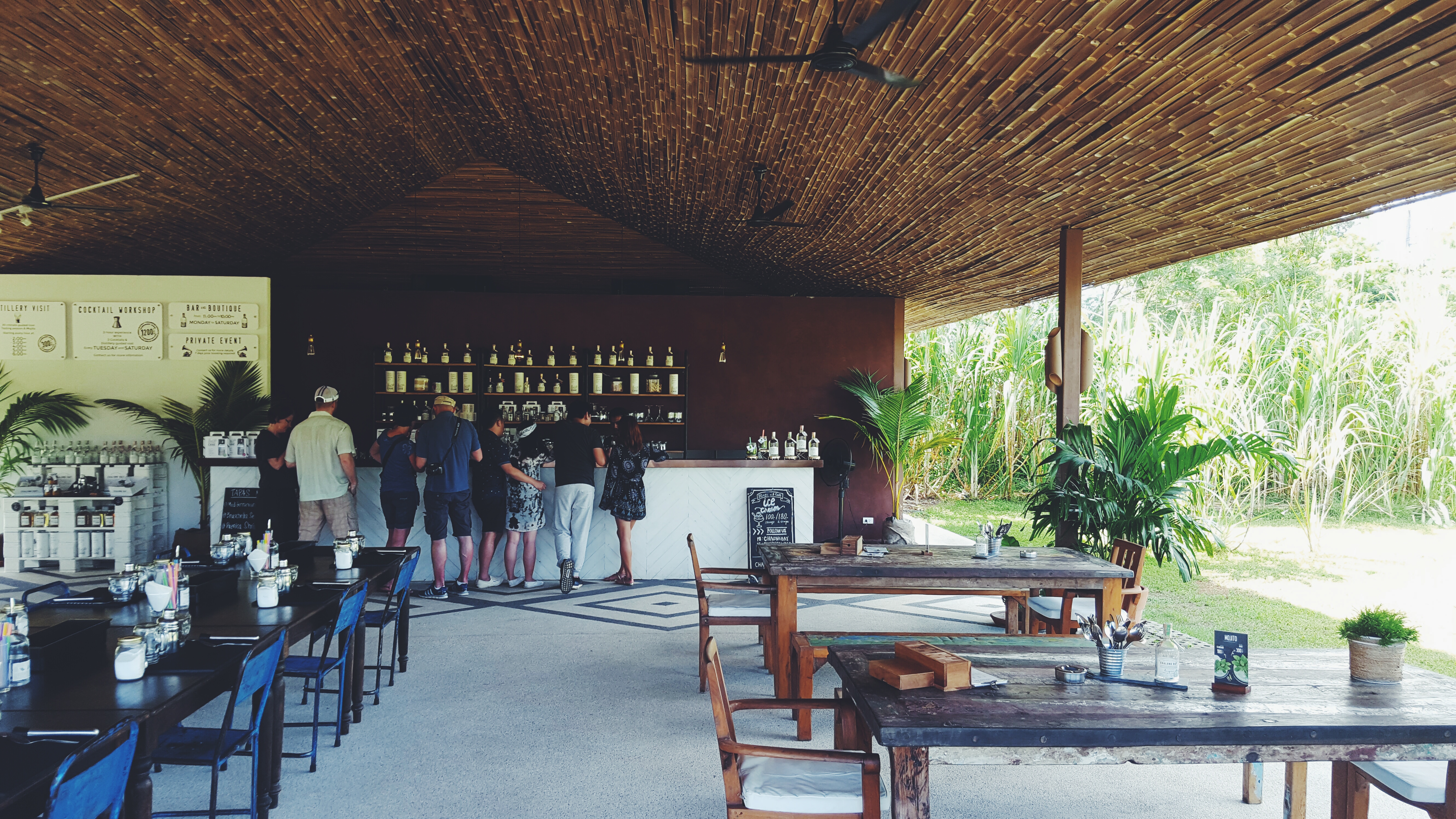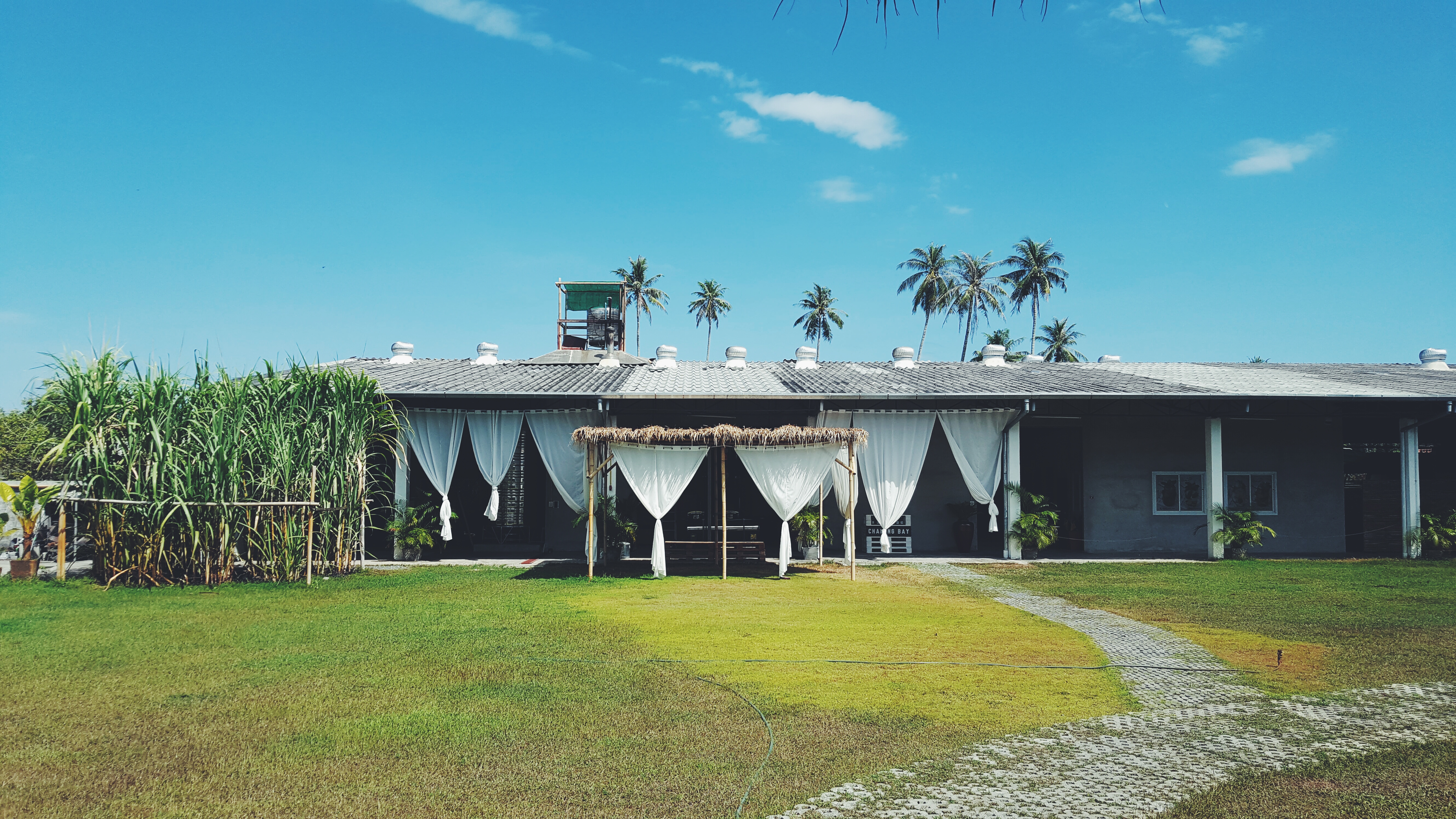It’s a hot afternoon in Phuket when we pull up to the parking lot of the Chalong Bay Distillery. As we get out of our car we feel the sun stinging our skin and quickly make our way towards the bar slash reception area. The distillery is comprised of low buildings, minimal yet elegant, finished with white linen and surrounded by banana trees and sugar cane.

We are heartily received by Nette with whom we inquire about a tour. We have to wait around fifteen minutes before the next tour starts but do so in the company of two mojitos, of course, prepared with Chalong bay rum. A group of tourists, who have just finished their tour, are crowding the bar for a tasting session, the part I’m already looking forward to.
Speaking of taste, some of you may wonder why a white rum would get so much attention? White rum, the key ingredient for popular cocktails such as mojitos, daiquiris, and Cuba Libres, rarely plays a lead role. To most, it is an odorless, flavorless, form of ethanol, useful to put some zing into sweet and sour drinks. And in most cases, white rum is exactly that. Yet it can be so much more.
What sets Chalong Bay apart from other white rums is its production process. Most commercial white rums are made from molasses, a byproduct of sugar production. White rum made from molasses leads to a harsher liquor with little character. Chalong Bay, on the other hand, is made from fresh sugarcane juice, which lends the rum a sweet and overpowering floral aroma and results into a smoother and more complex flavor.
Using sugarcane juice instead of molasses is a French technique contrived sometime in the eighteenth century in the Caribbean by French colonialists, Nette explains us. Crafting Martinique style rum is more expensive and more work but eventually, results in a better rum. Our tour of the distillery doesn’t only include the theory of rum production; we also take a look at the impressive copper still imported from France and the bottling plant.

Martinique style rum and French stills. Why transport all of that to the Far East? Nette tells us that South-East Asia is where sugarcane first originated and was introduced to the Americas by the Portuguese. So bringing the production of a high-quality rum back to the birth ground of the key raw material completes the circle.
After the tour of the distillery is finished a tasting session awaits us. Apart from the standard white rum they also produce three flavored rums, Thai basil, cinnamon, and lemongrass. The standard Chalong Bay is smooth and refined with an amazing aroma and complex flavor. The infused rums smell strongly of their ingredients but the aroma fails to reappear convincingly in the actual drink.
Nonetheless, Chalong Bay Rum is a great product, which Thailand should be proud of. It’s nice to see a Thai rum of high quality thrive. Keep it up Chalong Bay.
For more information regarding their products or arranging a visit to the distillery, go to http://www.chalongbayrum.com/en.



 0
0